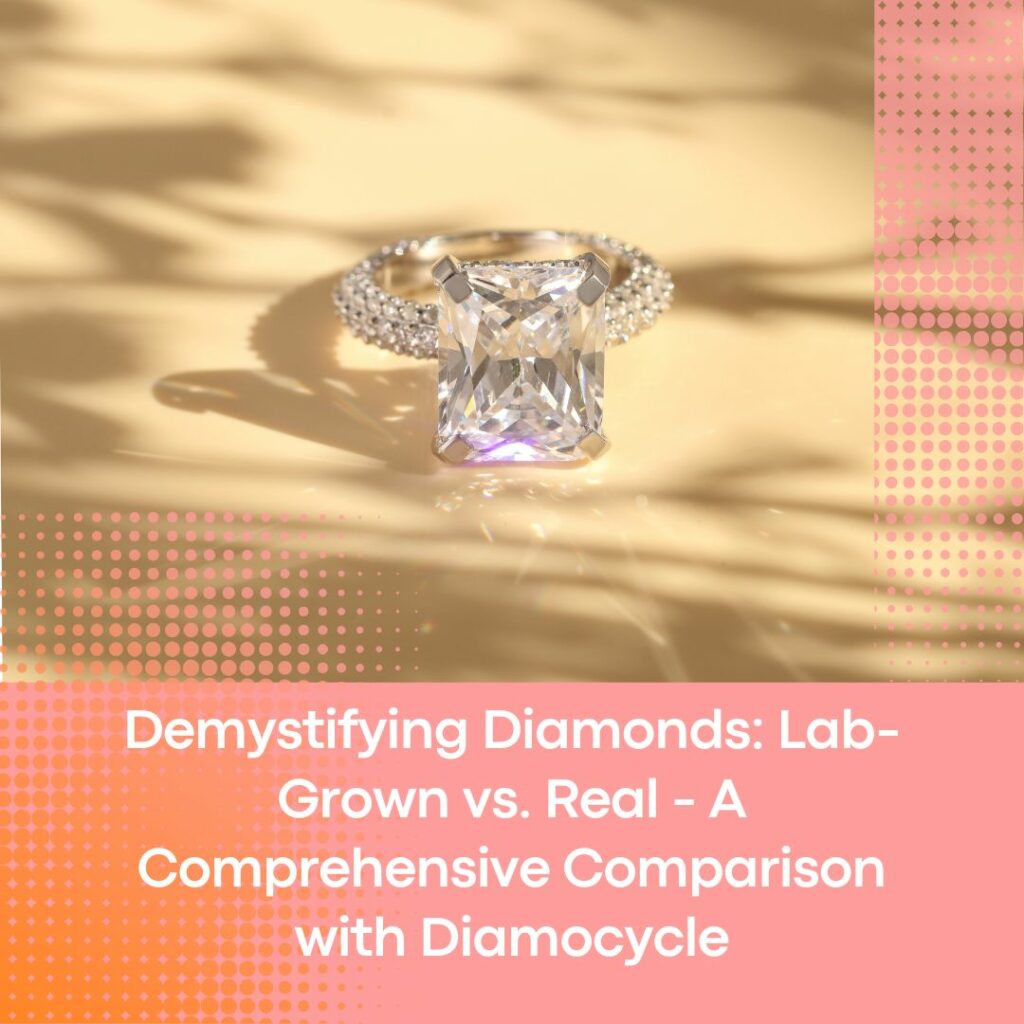In the realm of diamonds, the choice between lab-grown and natural stones can be both exciting and daunting. At Diamocycle, we’re here to provide you with a detailed exploration of lab-grown diamonds, offering insight into their sustainability, quality, and value compared to their natural counterparts. Let’s dive into the world of lab-grown diamonds and discover why they’re becoming an increasingly popular choice for engagement rings.
What Exactly Are Lab-Grown Diamonds?
Lab-grown diamonds, also known as synthetic or cultured diamonds, are created in controlled laboratory environments using advanced technological processes. These diamonds possess the same chemical composition, physical properties, and optical characteristics as natural diamonds formed deep within the Earth’s crust. At Diamocycle, we’re proud to offer lab-grown diamonds that are indistinguishable from their mined counterparts in terms of brilliance, fire, and sparkle.
Are Lab-Grown Diamonds Real?
Absolutely. Lab-grown diamonds are every bit as real as natural diamonds, boasting the same hardness, durability, and beauty. They undergo the same grading processes and receive certifications from esteemed institutions like the Gemological Institute of America (GIA), ensuring their authenticity and quality. Whether you choose a lab-grown or natural diamond, you can rest assured that you’re investing in a genuine and timeless symbol of love and commitment.
The Experts Weigh In: Lab-Grown vs. Natural Diamonds
According to experts in the field, the visual and chemical similarities between lab-grown and natural diamonds are virtually indistinguishable. In fact, the Federal Trade Commission officially recognized lab-grown diamonds as real in 2018, solidifying their status in the jewelry industry. With grading standards established by institutions like GIA, lab-grown diamonds are held to the same rigorous criteria as their natural counterparts, ensuring transparency and consistency in quality.
The Production Process: How Are Lab-Grown Diamonds Made?
Lab-grown diamonds are cultivated using two primary methods: Chemical Vapor Deposition (CVD) and High Pressure High Temperature (HPHT). These processes simulate the natural conditions under which diamonds are formed, albeit in a highly controlled laboratory setting. Whether it’s CVD or HPHT, the result is a genuine diamond with identical physical and chemical properties to those mined from the Earth.
Pros and Cons of Choosing Lab-Grown Diamonds
Opting for a lab-grown diamond offers several advantages, including affordability, ethical sourcing, and environmental sustainability. Lab-grown diamonds typically cost 30-50% less than natural diamonds of comparable quality, allowing you to maximize your budget without compromising on beauty or size. Furthermore, lab-grown diamonds bypass the environmental and ethical concerns associated with traditional diamond mining, making them a conscientious choice for eco-conscious consumers.
However, it’s essential to consider potential drawbacks as well. While lab-grown diamonds offer excellent value and ethical peace of mind, they may not retain the same resale value as natural diamonds over time. Additionally, the energy-intensive production processes involved in creating lab-grown diamonds raise sustainability concerns, albeit to a lesser extent than traditional mining practices.
Your Choice, Your Symbol of Love
Ultimately, the decision between lab-grown and natural diamonds is a personal one, influenced by factors such as budget, ethical considerations, and individual preferences. Whether you opt for the timeless allure of a natural diamond or the sustainable elegance of a lab-grown counterpart, Diamocycle is here to guide you every step of the way. Explore our curated collection of lab-grown diamond engagement rings and discover the perfect symbol of your enduring love and commitment.

